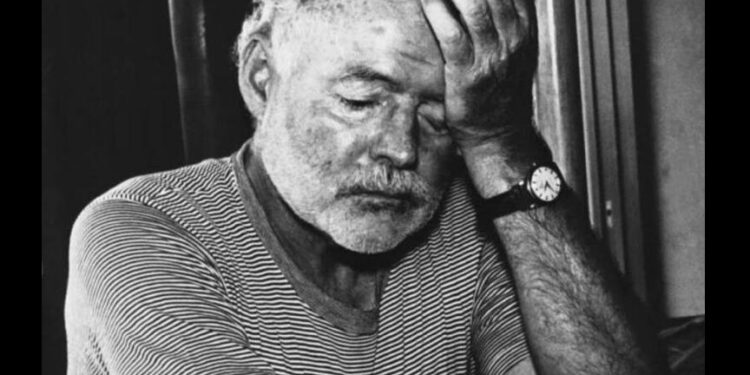The tragic end of America’s literary giant
Ernest Hemingway, the Nobel Prize-winning author whose spare prose and larger-than-life persona defined American literature for generations, ended his own life on a summer morning in 1961, leaving behind a legacy shadowed by mental illness and the pressures of fame. The man who wrote about courage under pressure ultimately succumbed to the very forces he had spent his career chronicling.
Born in Oak Park, Illinois, in 1899, Ernest Miller Hemingway rose from a middle-class upbringing to become one of the most influential writers of the 20th century. His parents, Clarence Edmonds Hemingway, a physician, and Grace Hall Hemingway, a musician, provided him with a well-educated foundation that would later inform his sophisticated yet deceptively simple writing style.
Hemingway’s literary career was marked by groundbreaking works that captured the disillusionment of the Lost Generation following World War I. His novels, including “The Sun Also Rises,” “A Farewell to Arms,” and “For Whom the Bell Tolls,” established him as a master of understated prose and dialogue. The author’s famous “iceberg theory” suggested that the deeper meaning of a story should not be evident on the surface but should shine through implicitly.
Throughout his life, Hemingway cultivated an image of rugged masculinity, becoming as famous for his adventures as for his writing. He served as a war correspondent, big-game hunter, deep-sea fisherman, and aficionado of bullfighting. However, this adventurous lifestyle came at a cost. Multiple serious concussions from accidents, including pulling a skylight onto his head in his twenties, may have contributed to traumatic brain injury that affected his later mental health.
The author’s final years were marked by increasing struggles with depression, paranoia, and declining physical health. He underwent electroconvulsive therapy in an attempt to treat his depression, but the treatment appeared to worsen his condition. Friends and family noticed his increasing anxiety and belief that he was being followed by government agents.
On the morning of July 2, 1961, at his home in Ketchum, Idaho, Hemingway ended his life with a self-inflicted gunshot wound to the head. His wife Mary reported being asleep upstairs when the gunshot rang out from the foyer. The Nobel Prize winner was 61 years old.
The tragedy of Hemingway’s suicide extends beyond the loss of a literary giant. It highlights the often-unrecognised struggle between creative genius and mental illness, and the failure of society to adequately address mental health issues, particularly among men of his generation. His death serves as a stark reminder that even those who appear strongest can be fighting invisible battles.
Despite his tragic end, Hemingway’s contribution to literature remains immeasurable. His influence on subsequent generations of writers is undeniable, and his works continue to be studied and celebrated worldwide. The man who once wrote about grace under pressure ultimately could not find that grace for himself, but his literary legacy endures as a testament to the power of honest, unflinching storytelling.
REFH – newshub finance



Recent Comments